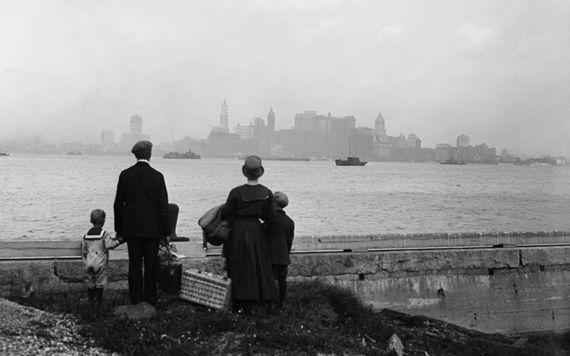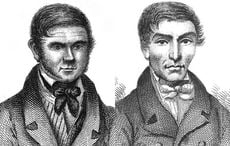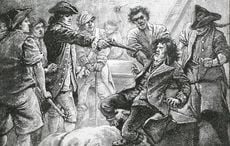Contributor John Fay shares the lesson he learned while searching for his family's Irish ancestry.
My Aunt Kathleen is the family genealogist. She literally wrote the book on our Irish American family. Yet, she hadn't been able to find any record of my grandfather's entry from Ireland into the U.S.
No one knew when he entered the country or where, but we had a good idea that he'd first come to America in 1916 and we were pretty sure he'd come to New York. He had brothers and a sister already there, so it had to be New York.
That meant he had to have come through Ellis Island – but there was no sign of him in their records. There was no difficulty finding my grandfather's brother, Rodger, who passed through Ellis Island in May 1913. That only added to the frustration. We knew my grandfather's name, obviously, we knew what year he was born, where he was from (sort of – more on that later) and we had a pretty good idea what year he immigrated.
So why didn't he turn up on the Ellis Island records?
The Ellis Island search facility is very flexible. You can search by a range of years by birth or by entry to the United States. You can even search by a partial last name. Yet not one of those bore fruit.
My grandfather's name was John Fahy when he left New Quay, County Clare, and he, along with his immigrant siblings, changed his name to Fay at some point. Today we can only guess as to why they did this.
I searched for Fahy, Fay, Fa, but nothing. I searched for people from New Quay whose last names began with Fa, but no luck.
I talked to my father about it and he concluded that his father had probably entered through Boston or Philadelphia and traveled on to New York. Given there was a war on at the time, it made sense that he might not have had the same number of options for traveling to America as those who traveled in peacetime. He might well have sailed to one of those cities.
Then one afternoon I had a brainwave. I'm not much of a genealogist, but I've used computers for nearly 30 years and I know how things can go wrong. And one adage that all heavy computer users know is, “Garbage in, garbage out.”
It occurred to me that the computerized records I was searching for weren't always computerized. Someone had to key them in. So I started searching for misspellings for the name Fahy.
And I found him.
Ellis Island has him listed as John Tahy, who arrived in November 1915. The Ellis Island Web site not only lets you search the records, but when you find the record you want, you can view an image of the actual immigration record. Everything was there.

Love Irish history? Share your favorite stories with other history buffs in the IrishCentral History Facebook group.
His U.S. address was his brother Pat's place in Palisades Park, N.J. He paid for his own passage and, although it's tough to make out, it looks like he had £20 on him.
He had traveled on the SS Saint Louis and, happily, he was neither a polygamist nor an anarchist. He was presumably in good health as no mention is made of it in the appropriate area. He is listed as being 5'10” with hazel eyes, fair hair, fair complexion, and no marks of identification.
He was a British subject – it was 1915 – and a member of the Irish race. He came from Finvara, Ireland. Yep, Finvara (Finivara or Finavarra), not New Quay.
His brother had arrived two years earlier and listed his hometown as New Quay. The address (today, anyway) would be Finavarra, New Quay, County Clare.
The combination of the misspelled last name and the variations in my hometown name had made my grandfather all but invisible. All because someone misread a capital F as a capital T.
Just about anyone familiar with Irish names would have known that Tahy is not an Irish name. If the person who entered the data from the Saint Louis's manifest of November 11, 1915, had known that Fahy was more likely than Tahy they might well have looked twice at the legible, cursive entry for my grandfather.
Handwriting styles change and I can see how someone who is not of Irish descent might have thought the name was Tahy. I would wager that most of the other 34 listed Tahys – many of whom seem to have come from the same part of Ireland as my grandfather – should also be Fahys.
The moral of the story is, if you're searching computerized records and you can't find a relative who you know should be there, remember that the person who typed the data in could have made a simple error – one that no one would notice, but one that will certainly frustrate you.
Think about handwriting, think about the drudgery of entering data from handwritten records, and start searching for simple erroneous versions of the name you are searching for.
Originally published in 2009. Updated in 2023.




Comments